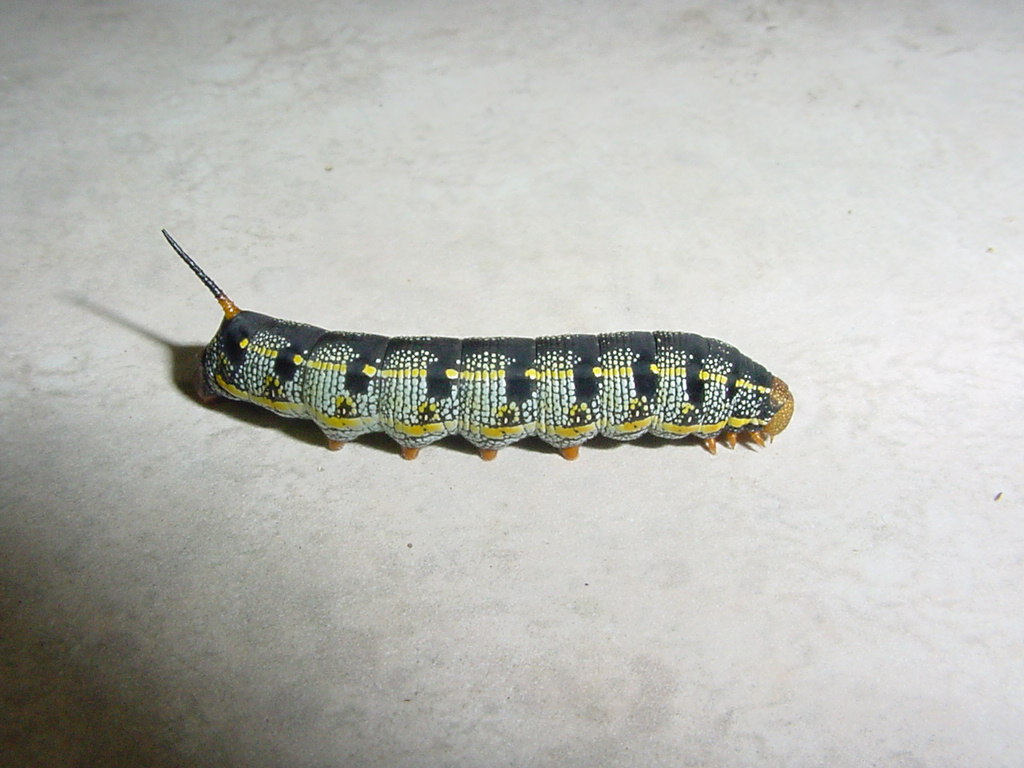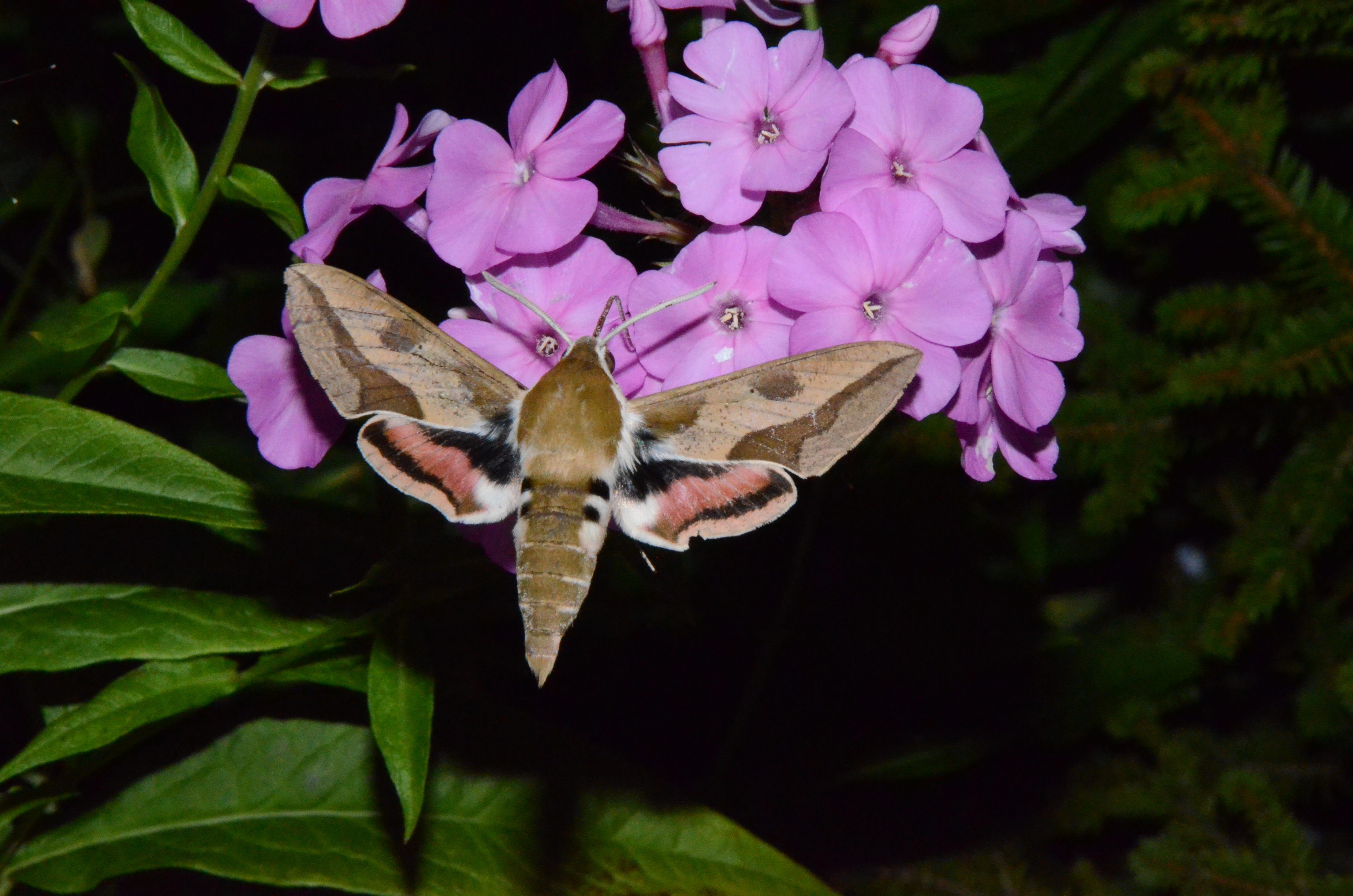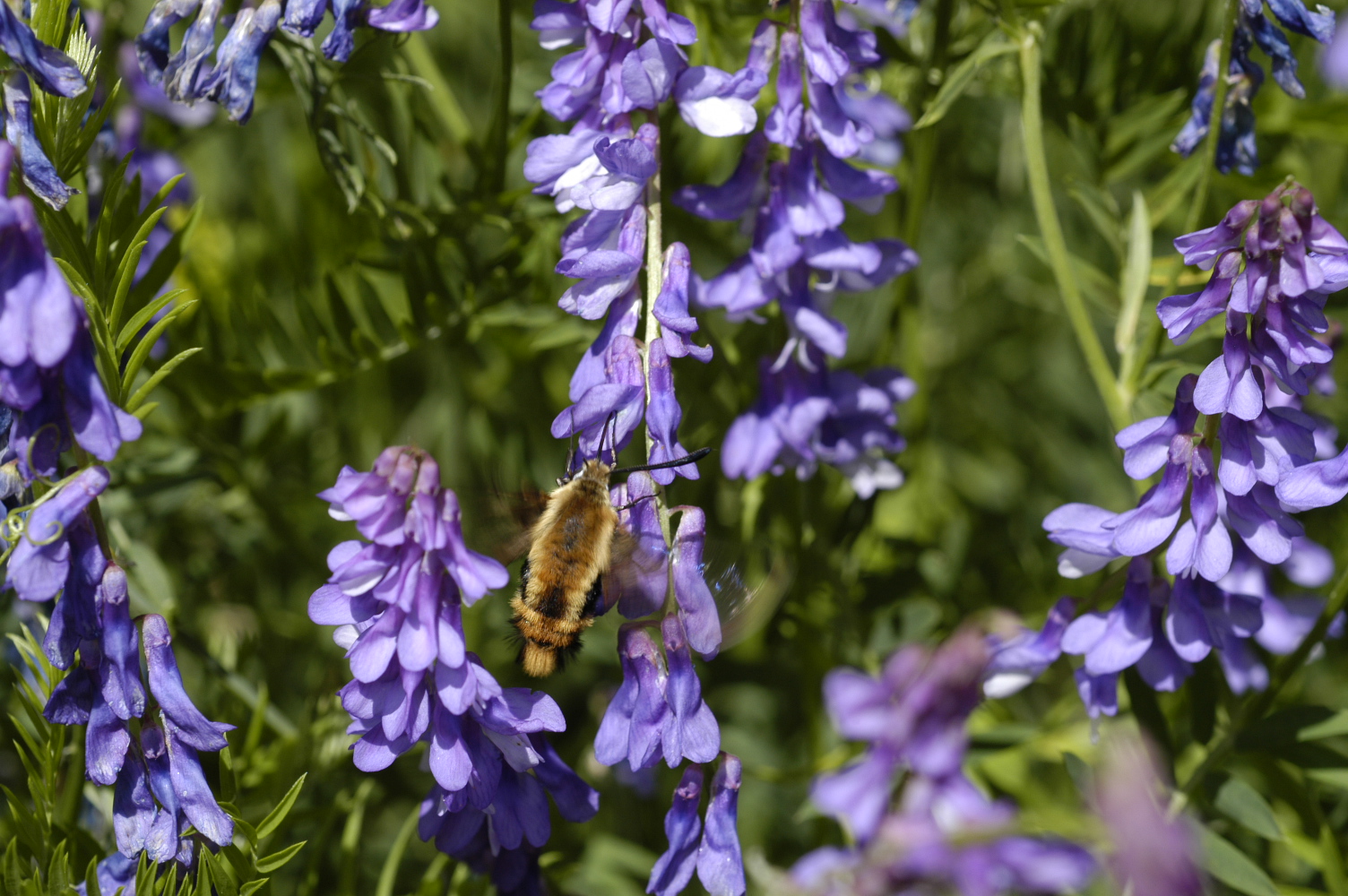Beautiful hawk moths are common in Michigan gardens this year
Watch your flowering plants closely to see these amazing insects.

Two species of hawk moths, also known as sphinx moths, have been very numerous in Michigan flower gardens this year. Both of them are gifted fliers, able to hover like hummingbirds while they feed on the nectar of flowers with their long tubular mouthparts.
One is the called the white-lined sphinx (Hyles lineata). Their front wings are deep brown with grayish-borders, a wide cream band and several crisp white streaks. The hind wings have a broad pink band on a dark brown background. It is very hard to get a good look at the wings because the moths are almost always fluttering at a high speed. The body is light brown with white lines and spots of white and black, and much easier to see when they are hovering. The wing span of this moth varies quite a bit, from 1.75 to 3 inches.
Although the white-lined sphinx is most active at night, it can be found taking nectar from flowers at any time of day, especially in overcast weather. It is easily mistaken for a small hummingbird. They feed on the nectar of many types of flowers; in gardens they are often found nectaring on phlox and petunias.
The caterpillar of the white-lined sphinx is a hornworm, shaped a lot like the common tomato hornworm. They come in two different color forms, with a base color of either bright green or black and yellow; there are numerous markings of variable shapes and colors. They feed on evening primrose, purslane and related plants. This species sometimes goes through population booms that result in very large numbers of caterpillars and moths for a year or two. I once saw hundreds of caterpillars crossing a road in search of another patch of food plants.
White-lined sphinx caterpillar. Photo by Duke Elsner, MSU Extension.
In some parts of Michigan there is a closely related species called the spurge hawk moth (Hyles euphorbiae). This is a European species that was introduced into the United States and Canada to help control a weed called leafy spurge. It can be difficult to tell the spurge hawk moth from the white-lined sphinx when they are in flight.
Spurge hawk moth adult. Photo by Duke Elsner, MSU Extension.
The other species that has been common this summer is called the hummingbird moth (Hemaris thysbe). It flies only during the day and takes nectar while hovering at flowers. This one is smaller, rarely more than 1.5 inches in wing span. The wings are partially clear, only the margins are covered with dark scales.
The body hair is a deep golden shade, sometimes with greenish hues, and there are patches and tufts of black hair; it actually looks a lot like a large bumblebee, but its fast darting and hovering abilities makes it look like a small hummingbird. This species also feed on the nectar of many different flowers.
The caterpillars of the hummingbird sphinx are typical hornworms; they are delicate shades of green with yellowish lines and some reddish marks. The caterpillars of this species feed on viburnums, blueberries and cranberry.
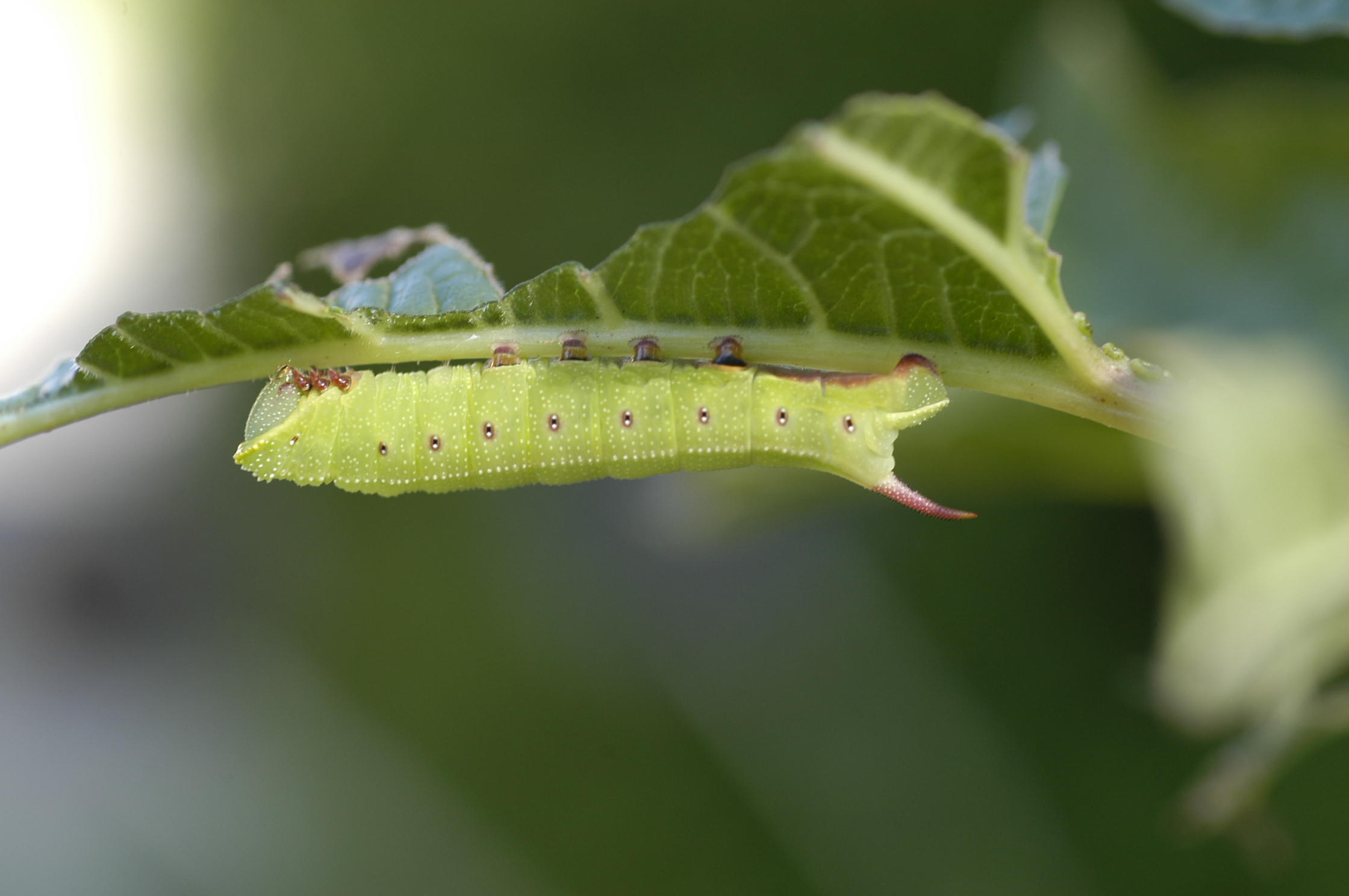
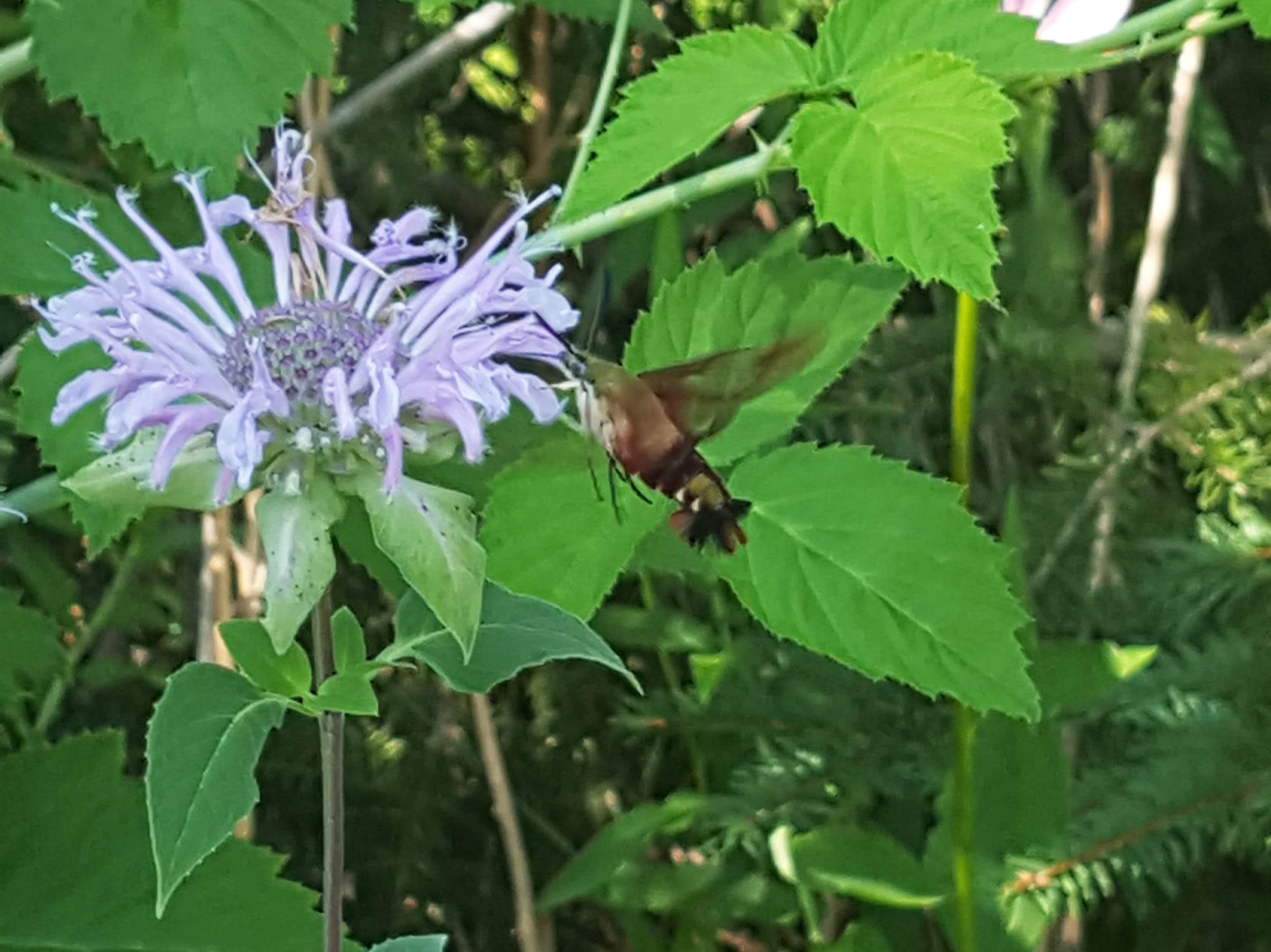
A hummingbird sphinx caterpillar and adult. Photos by Duke Elsner and Mark Longstroth, MSU Extension.
A very closely related species, the bumblebee sphinx (Hemaris diffinis), is smaller and has brighter yellow hair. It also flies during the daytime. The caterpillars feed on plants in the honeysuckle family.
Bumblebee sphinx adult. Photo by Duke Elsner, MSU Extension.



 Print
Print Email
Email